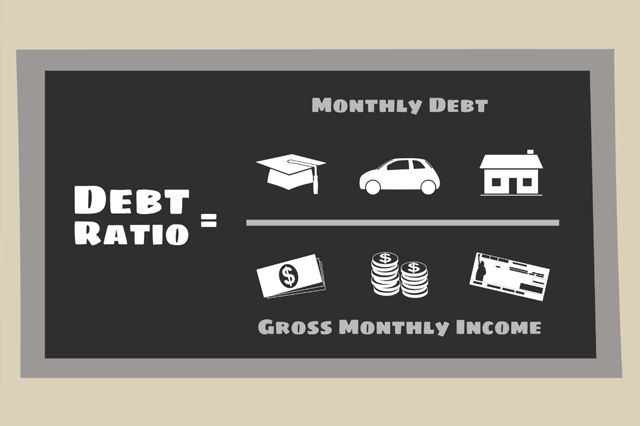Debt-to-Income Ratio
Nov 02, 2023 By Susan Kelly
DTI a personal finance measure, compares your debt to your gross monthly income. Your total recurring debt divided by your gross monthly income can calculate your debt-to-income ratio. This number is important because it can be used to determine your ability to repay the money you borrowed. Lenders use it to determine your ability to repay money borrowed or take on additional debts such as a mortgage, car loan, or mortgage. This number is also useful in deciding whether or not you want to purchase a large item.
How to calculate your DTI
Add up all your monthly recurring debts to calculate your debt-to-income ratio. Other recurring debts that you should include, aside from your mortgage, are:
- Auto loans
- Student loans
- Minimum credit card payment
- Alimony and child support
- Other monthly debt obligations
Next, calculate your gross (pretax) monthly income.
- Wages
- Salaries
- Tips and Bonuses
- Pension
- Social Security
- Alimony and child support
- Other income sources
Divide your total monthly recurring debt by your gross monthly earnings. This will give you a decimal number. To express your debt-to-income ratio in percentages, multiply it by 100.

Are You Able To Afford A Big Purchase?
When calculating your debt-to-income ratio, it is important to consider major purchases. Any lender that considers your application will be able to do this; you can be certain. An online calculator can calculate the monthly mortgage payment and the new car loan amount you are looking at. Comparing your "before" and "after" debt-to-income ratios is possible to determine if you can afford a home or a new car. Lenders prefer to see a ratio of debt to income that is less than 36%. This is an example with no more than 28% going toward servicing your mortgage. Your maximum debt-to-income ratio should not exceed 43% to qualify for a mortgage.
How to Bring Down the Ratio of Your Debt to Your Income
Create a budget to keep track of your spending and cut down on things that aren't required so that you may put more money toward paying off your debt. Make sure to include all your costs, whether large or minor, to determine how much more you may put toward paying down your debt.
Create a strategy to reduce the amount of debt you owe. The snowball and avalanche methods are two of the most common approaches to paying off debt. The snowball strategy requires you to pay off your smallest credit balances first while also meeting the minimum payment requirements of your other balances. When you have paid off the account with the lowest amount, you go on to the account with the next smallest balance, and so on.
On the other hand, the avalanche technique, also referred to as the ladder method, entails addressing accounts based on higher interest rates. After you have reduced the amount of an account with a higher interest rate, you should go on to the account with the next highest rate, and so on. The most important thing to remember is to execute your strategy exactly as laid out. The debt payback calculator found on Bankrate.com might be of assistance.

Make your debt more affordable. If you have credit cards with high-interest rates, you should look into strategies to lessen those charges. First, give the customer service line of your credit card firm a call and ask if they can reduce your interest rate. If your account is in excellent standing and you always pay your bills on time, choosing this method will give you a better chance of success.
You might combine debt with high-interest rates into a loan with a lower interest rate and one monthly payment to the same firm by taking out a personal loan. This is one more approach to debt consolidation.
Avoid taking on extra debt. You should avoid charging huge amounts to your credit cards or taking out additional loans when making significant expenditures. This is of the utmost importance both before and throughout the process of purchasing a property. Taking on more debt may have a negative impact on not just your debt-to-income ratio (DTI) but also your credit score. Similarly, having an excessive number of credit queries may also bring down your score. Maintain a single-minded concentration on eliminating debt while avoiding further aggravating the situation.

Feb 07, 2024 Triston Martin

Jan 17, 2024 Susan Kelly

Dec 23, 2023 Triston Martin

Jan 27, 2024 Triston Martin

Oct 12, 2023 Susan Kelly

May 20, 2024 Triston Martin